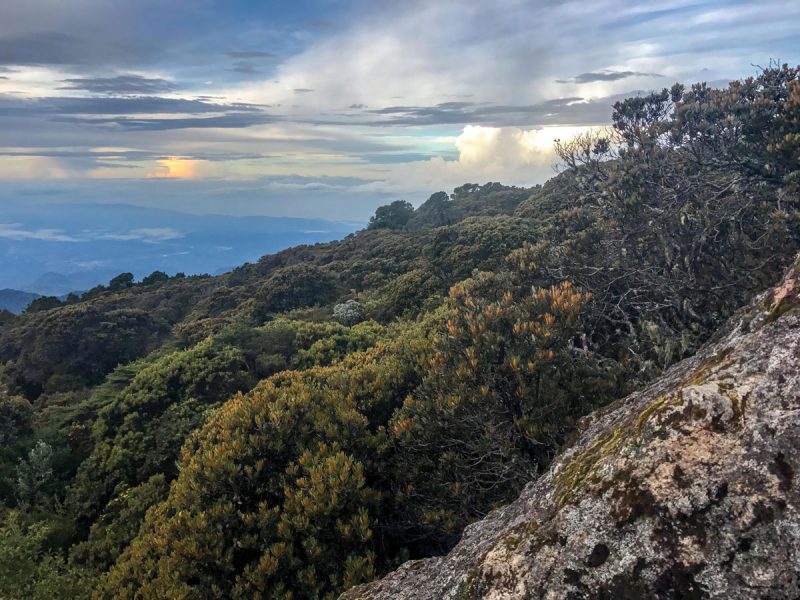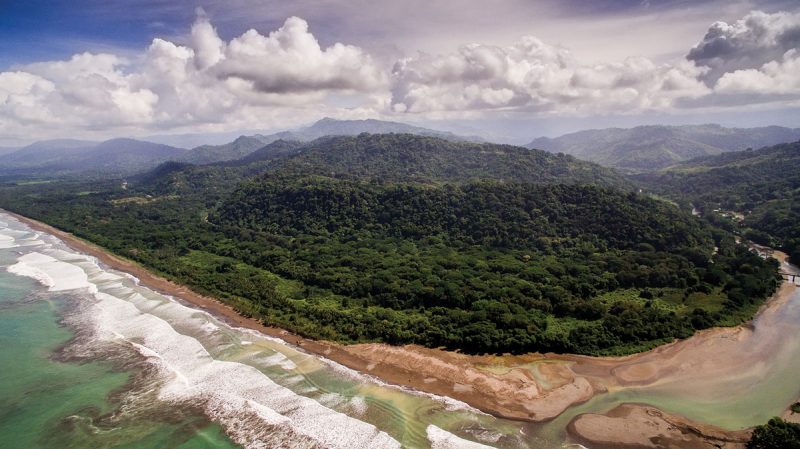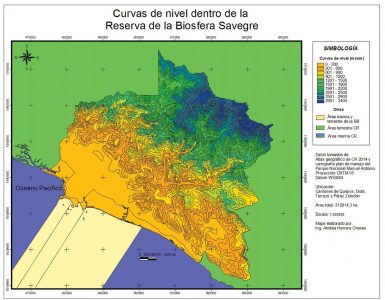SAVEGRE BIOSPHERE RESERVE
International Recognition of our Natural Treasures
By Jack Ewing
Those of us who live in this area and have been active in the environmental movement are proud to inform our visitors, friends, and the general public that on Wednesday, June 14, 2017, in Paris, France, UNESCO’s Man and the Biosphere (MAB) program declared the Savegre River basin and much of the surrounding area “The Savegre Biosphere Reserve”. On Saturday, July 8, 2017 in San Gerardo de Dota, with the presence of Luis Guillermo Solis, president of Costa Rica, and representatives of local governments, community and environmental organizations the reserve became official. The president and the minister of the environment signed a decree officially recognizing all four biosphere reserves in Costa Rica and declaring November 3 annual biosphere reserve day. The newly signed decree creates the organizational structure with which locally entities will promote the sustainable use of our biodiversity. It is truly an honor to live and work in such a special place.

The MAB program designates certain areas of the planet that are well conserved and representative of a variety of natural habitats as biosphere reserves. The program is unique in that it not only promotes the protection of natural areas but also values human activities within those areas.
The Savegre Biosphere Reserve extends from Manuel Antonio National Park, including its area of marine reserve, along the coast all the way to Hacienda Baru National Wildlife Refuge and the Barú River. From the coast it follows the Savegre River basin, and the basins of numerous other rivers such as the Barú upwards to the central mountain range at 3400 meters (11,155 feet) of altitude. In addition to Manuel Antonio one other national park, Los Quetzales, is found within its boundaries, as are Cerro Nara Protected Zone, Los Santos Forest Reserve, Cerro Vueltas Biological Reserve, and four national wildlife refuges, (Paramo, Hacienda Portalón, Transylvania, and Hacienda Barú), and also a number of unofficial reserves such as Rafiki Safari Lodge and Nature Reserve, La Guapil Reserve, Firestone Center for Restoration Ecology, Rio Magnolia Reserve, among others. It includes three biological corridors, Los Santos, Rio Naranjo, and Path of the Tapir. The total area is 312,914 hectares (733,227 acres). Parts of four cantons, Quepos, Pérez Zeledón, Dota, and Tarrazú, and two conservation areas Central Pacific (ACOPAC) and La Amistad Pacifico (ACLA-P) are included. The Savegre Biosphere Reserve contains 20% of the plant species, 54% of the mammal species, and 59% of the bird species found in Costa Rica. Approximately 50,000 people live and work within the reserve at a variety of activities including sport fishing, farming, cattle ranching, fish farming, adventure tourism and ecological tourism.

The project to accomplish the declaration of Savegre Biosphere Reserve by MAB was a daunting task that was begun in 2010. The idea originated with communities located in the Savegre River Basin, especially the family of Don Efrain Chacón from the area around San Gerardo de Dota. In 2011 the Association Friends of Nature of the Central and South Pacific (ASANA), the organization which founded the Path of the Tapir Biological Corridor in 1990, was invited to join the effort and from that point forward spearheaded the project until its completion on June 14 of this year. In order to accomplish this goal it was necessary to acquire the approval and cooperation of four municipalities, two areas of conservation of the environmental ministry, and many community and environmental organizations.
Even though the designation of biosphere reserve by UNESCO’s Man and the Biosphere program is international the area remains part of the sovereign Republic of Costa Rica. The laws governing the use and development of the land are no different in a biosphere reserve than in the rest of Costa Rica. However it is understood that the Costa Rican government and those of us who live in the Savegre Biosphere Reserve are charged with conserving the amazing natural richness of the area and educating residents and visitors about sustainable use of the land and conservation of the biodiversity.
 At the end of 2016 there were 669 biosphere reserves located in 120 countries. Of those reserves 20 cross international boundaries meaning their territories include area within more than one country. The Savegre Biosphere Reserve is the fourth to be named in Costa Rica. The others are La Amistad (international – Costa Rica and Panama), the Volcanic Mountain Range, and Water and Peace.
At the end of 2016 there were 669 biosphere reserves located in 120 countries. Of those reserves 20 cross international boundaries meaning their territories include area within more than one country. The Savegre Biosphere Reserve is the fourth to be named in Costa Rica. The others are La Amistad (international – Costa Rica and Panama), the Volcanic Mountain Range, and Water and Peace.
It is a privilege and an honor to live and form part of the Savegre Biosphere Reserve. All of us at ASANA and Hacienda Barú will continue to strive to protect our natural treasures and encourage others to do the same.
